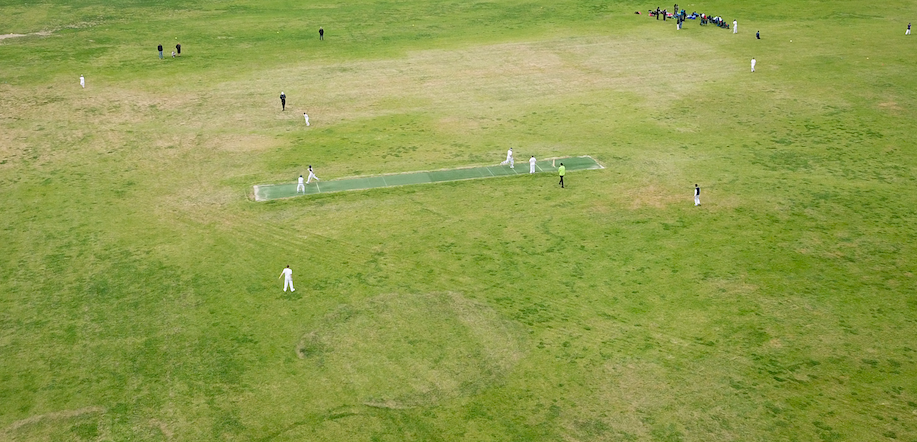It’s quite a common occurrence…
We have so many players in our Academy Programs that come to us and tell us that they struggle to bowl and restrict their opposition in the dying overs.
“They just got away from me”, or “no matter what and where I bowled they just seemed to hit boundaries off me!”.
Bowling at the death is a very, very different skill set to bowling earlier in the innings.
The earlier many players can understand that they need to bowl differently in different stages of the game, the better off they will be.
The better and more effective you become at it, you will be the star of the side and someone that your captain will throw the ball to, over and over again.
With that said, I’ve compiled 5 reasons many bowlers struggle to bowl at the death and a framework to help you become the death bowling legend you hope to be!
1. You Don't Have A Set Plan Before You Bowl
A very common one, where bowlers become flustered and often find that they lack the necessary clarity under the pump in the heat of the situation.
A simple way you can avoid this is to take some time to think about what your plans will be before you start your spell.
This may be before the game or during the overs preceding to make sure that you have some idea of what and where you are going to bowl.
The other reason for having a plan before you start bowling is it gives you the confidence to execute. You feel better prepared and more confident to tackle the batters movements.
This plan is very dependant on who is batting, the dimensions of the field, your strengths as a bowler, and the state of the game.
HOWEVER! If you can take the time to actually sit back and spend a few overs to think about what plan you are going to start your spell with you are going to be much better off!
2. Your Field Doesn’t Match Your Plan
Obviously this comes from a lack of clarity.
Meaning, you need to understand the ball you are trying to execute first, so you can set your field accordingly.
Many players set their field and just leave it through the over/s. This is probably the worst thing to do while bowling at the end.
Remember your aim in these final overs is to reduce as many runs as possible and build pressure to force the batter to make the mistake.
From a batter's point of view, they want boundaries and or twos/three’s. If you can starve them of that and take one a ball or dots then you will build pressure naturally which will hopefully bring wickets.
To do this you need to plug the holes in the field where boundaries may occur from the types of line and length you may bowl.

Think of it this way…
If you are bowling full and straight, where are the areas you're likely to get hit?
Answer: most likely straight back past you right? Or at the very least, in front of square. Setting your field to bowling full and straight at the death with 4 or 5 fielders covering - deep cover, normal cover, long-off, long-on, deep mid-wicket and mid-wicket etc. gives the batter a 1 or maybe 2 if they get it into the gap.
Now try thinking about bowling a bit shorter... Most of your fielders will be behind square or just in front on the leg side.
Why? Because if you execute they are certainly not going to be able to drive the ball so you are potentially (or more likely) taking the boundary option away from them.
Again think about what ball you are trying to bowl, what is the most likely shot they are going to have to play.
If you have your fielders there defending boundaries they are going to have to take higher risks, aren’t they?
3. You Haven’t Trained To Execute Bowling At The Death
A lot of the times many players find that they haven’t practised bowling under pressure.
Not confused with being tired, more so when batters are in that mindset to look to score quickly and are batting overly aggressive.
A really key ingredient to you improving your death bowling is to actually put yourself in that situation as much as you can.
This is where you learn from mistakes, whether that be field settings, types of balls to bowl or even just how to execute the types of deliveries.
Bowling in blocks of 6 to try and hit a shoe or cones away from batters is also something that will help you progress with your death bowling.
Allocate some time (12 or 18 balls) to just try and nail yorkers, slower balls etc. during your net session so you can become accustomed to it.
? *PRO-TIP* ?
Don’t always just blatantly practice the one ball over and over again. Once you feel confident bowling yorkers or slower balls try to mix it up and execute it first go.
After all, you don’t normally get 2 chances to bowl them in a game.
You will get much better if you can nail your change-up or yorkers first go. Keep practising because it will take time to develop this skill.
4. You Are Too Predictable (No Plan B)
Being adaptable is the key to performing well in this period of the game.
You need to have the ability to shift your plan or fields/lengths dependant on what the batter comes back with.
This may be based on two batting styles the current batters have. You may need to set a certain field or bowl a certain way to one batter, but totally different to the other.
You see a lot of players set in their ways and end up making the shift a little too late.
1, 2 boundaries later and then the change is made. If you find at this stage of the game that what you are doing isn’t working then you have to change it up.
This doesn’t have to be for the whole spell though, a simple change in pace or length can be something that gets you back and helps build pressure.
? *PRO-TIP* ?
Each ball is a contest in this stage. If you have to change your field for one ball to match the delivery you are bowling do it!
It’s one thing for the batter to know what may be coming, but it’s another for them to execute and hit it clean enough.
5. Lack Of Communication With Skipper
This is crucial during the final overs.
You need to make sure you are clear on what your plan is, based on what the captain wants or needs you to do.
It’s crucial to stay on the same page or at least understand clearly what needs to be done.
I suggest asking 3 simple questions during your conversation;
- What is our aim for this over? - It may be to get the set batter off strike, or to get them to hit to the longer boundary etc.
- How do we go about doing this? - Is there any changes to the field needed or my bowling plan. Communicate what you were planning to bowl.
- Agree on a plan of action. Re-iterate what it is you are going to do to make sure that the captain understands your intentions and the plan that you’ve both just agreed upon.
This is something that doesn’t happen with everyone but I have personally found this very beneficial.
It allows you to have common ground with the captain, come to a solution together and communicate the final plan so there is no confusion between bowler and captain.
If there is an uncertain feeling or anyone is unsure they can re-iterate and confirm what is happening.
So there you have it, a fairly simple yet effective framework for bowlers to make sure they are bowling their best, come the end of the innings.
Learning these skills are crucial and will definitely help you go a long way to improving your death bowling!
Author: Joel Hamilton - ACI Co-Founder & Coach

